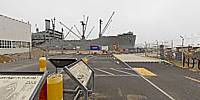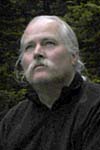
The Giant Whirley Crane
Rosie the Riveter / World War II Home Front National Historical Park, Richmond, California, USA
23 January, 2013 11 am
© 2013 G. Donald Bain, All Rights Reserved.
My intention was to photograph the engine room of the "Liberty Ship" Red Oak Victory, a really huge old-fashioned machine. The engine room of the very similar liberty ship Jeremiah O'Brien on display in San Francisco, was used in the movie Titanic (with some special effects to make it look more titanic).
But when I got down to the old shipyard I found that the historic ship was closed, though usually open on weekends. Since I had left my WWP photography to the very last day, I had to come up with an alternative right away - and there it was, towering over me.
The "whirley cranes" got their name from their ability to rotate 360° in place. They weighed 114 tons (103 tonnes), rode on 32 foot (10 meter) wide tracks, and could lift 83 tons (73 tonnes) with their 110 foot (34 meter) booms. They could even be used two to four together to lift huge prefabricated ship sections into place. Nothing characterized the shipyards better than the towering latticework booms and big square turrets of the cranes on the skyline.
This particular crane had been saved from salvage so it could become part of the historical display at Kasier Shipyard #3, alongside the liberty ship and the fitting warehouse. It may eventually be refurbished and put back into working order.
Before I left I happened to notice something unusual - a pair of ospreys (sea eagles) were working on a big messy nest on the very top of the whirley crane. Apparently they have been raising their young there for the last three years.
Lat: 37° 54' 19.44" N
Long: 123° 22' 57.84" W
Elevation: sea level
Precision is: Unknown / Undeclared.


 Tap or click the zoom icon in the bottom right corner of the picture to switch between in-page and fullscreen view
Tap or click the zoom icon in the bottom right corner of the picture to switch between in-page and fullscreen view